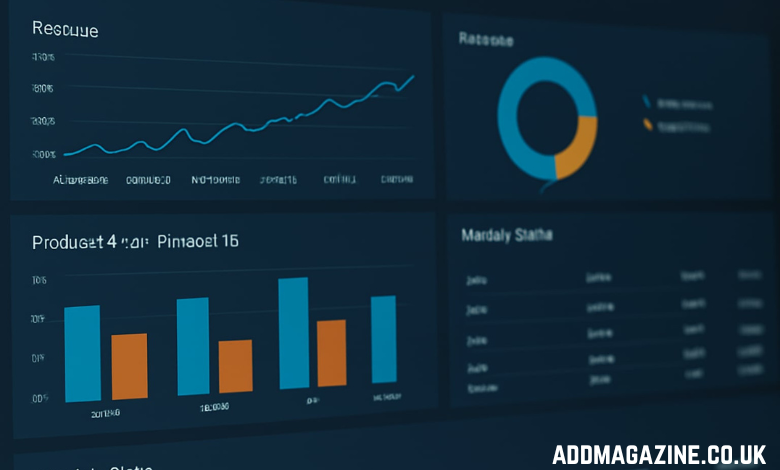In today’s fast-paced business environment, organizations are constantly seeking ways to streamline operations, boost productivity, and ensure strategic goals are met efficiently. One tool that has proven to be invaluable for executives in this regard is the Executive Operations Performance Indicator System, commonly known as EO Pis. This system, designed to offer a strategic measurement framework, enables top-level management to monitor, assess, and act upon essential operational data in real-time. By doing so, EO Pis plays a vital role in aligning organizational activities with high-level corporate objectives, improving overall efficiency, and enhancing decision-making.
What is EO Pis?
EO Pis stands for Executive Operations Performance Indicator System. It is an advanced framework designed specifically for executives to provide them with a consolidated view of key operational metrics across various departments. This differs from traditional Key Performance Indicators (KPIs), which are often limited to department-specific goals. EO Pis aggregates performance data from various functions into a unified system that helps executive teams monitor the pulse of the organization as a whole.
The ultimate goal of EO Pis is to ensure that business leaders have an effective way of understanding not only how well the organization is performing but also what areas need attention. By offering real-time insights into performance, EO Pis empowers executives to make data-driven decisions, adjust strategies when necessary, and allocate resources effectively to meet organizational goals.
EO Pis vs. Traditional KPIs
To fully understand the significance of EO Pis, it’s essential to differentiate it from traditional KPIs. KPIs are performance metrics that measure the success of specific activities within an organization. These indicators are typically department-specific and may focus on aspects such as sales figures, customer satisfaction, or production speed.
While KPIs are helpful in tracking departmental progress, they do not provide a holistic view of how the entire organization is functioning. This is where EO Pis comes into play. EO Pis aggregates data from multiple departments and presents it in an executive-friendly format, offering a consolidated view of the organization’s overall performance. This allows leadership to identify trends, uncover potential challenges, and make more informed decisions.
Moreover, EO Pis is designed to be dynamic and adaptive to the fast-changing business environment. Unlike static KPIs, which may require manual updates and adjustments, EO Pis leverages technology to offer real-time analytics and automated data updates. This means executives can make decisions based on the most up-to-date information, which is crucial in today’s rapidly evolving business landscape.
Key Features of EO Pis
EO Pis offers a wide range of features that make it an indispensable tool for modern-day executives. Some of the key features include:
Real-Time Data Collection
One of the standout features of EO Pis is its ability to collect data in real time. In traditional systems, data collection can be delayed, requiring executives to make decisions based on outdated information. EO Pis removes this hurdle by offering live data feeds, ensuring that executives always have access to the most current insights.
Comprehensive Dashboard
EO Pis provides a user-friendly dashboard that consolidates all key performance indicators in one place. This dashboard allows executives to track performance across multiple departments and functions simultaneously, offering a snapshot of the organization’s overall health.
Customizable Metrics
Each organization has unique needs and goals. EO Pis recognizes this by offering customizable metrics. Executives can tailor the system to track the specific performance indicators that are most relevant to their organization’s objectives. This customization ensures that the system is not one-size-fits-all but adaptable to the needs of the business.
Automated Analytics
EO Pis goes beyond simply presenting data; it also automates the process of analyzing that data. By using artificial intelligence (AI) and machine learning algorithms, EO Pis can identify patterns, trends, and anomalies in real-time. This automated analytics function provides executives with actionable insights without requiring them to manually sift through large volumes of data.
Predictive Insights
Through advanced algorithms, EO Pis offers predictive insights that help executives foresee potential challenges and opportunities. By analyzing historical data and current trends, the system can forecast future performance, enabling business leaders to proactively adjust their strategies.
Collaboration Tools
EO Pis fosters collaboration by allowing executives and their teams to communicate directly within the system. This feature enhances transparency and ensures that everyone is aligned with the organization’s goals. Whether it’s discussing performance trends or developing new strategies, EO Pis provides a collaborative platform for leadership teams.
Benefits of EO Pis for Executives
The integration of EO Pis into an organization can bring numerous benefits to executives, some of which are outlined below:
- Better Decision-Making
By offering real-time insights and predictive analytics, EO Pis enables executives to make informed decisions based on accurate, up-to-date data. This reduces the risk of making decisions based on outdated or incomplete information and helps steer the organization toward its strategic goals. - Improved Alignment with Business Goals
EO Pis provides a clear link between day-to-day operational activities and high-level business objectives. By continuously monitoring performance, executives can ensure that all departments are aligned with the organization’s strategic goals. This ensures that every action taken within the company contributes to its overall success. - Enhanced Resource Allocation
With EO Pis, executives can easily identify areas where resources may be underutilized or overutilized. Whether it’s budget allocation, manpower, or time, EO Pis helps leaders allocate resources efficiently, ensuring that the company is operating at its highest potential. - Agility and Flexibility
The ability to quickly access real-time data allows organizations to be more agile and responsive to changes in the business environment. Whether reacting to market shifts, customer needs, or operational disruptions, EO Pis equips executives with the tools they need to pivot quickly and effectively. - Increased Transparency and Accountability
EO Pis promotes transparency by making performance data accessible to all relevant stakeholders. When everyone in the organization can see how performance is tracking against goals, it fosters accountability. This transparency ensures that all team members are aware of their roles in driving the organization forward. - Cost Reduction
By identifying inefficiencies and areas where operations can be optimized, EO Pis can help organizations reduce costs. Whether it’s through streamlining workflows, improving resource allocation, or minimizing downtime, EO Pis plays a key role in cost-saving initiatives.
Challenges in Implementing EO Pis
While the benefits of EO Pis are numerous, organizations may face some challenges when implementing this system. Some of the common hurdles include:
- Initial Investment
Implementing an EO Pis system may require significant upfront investment, particularly in terms of technology and training. Smaller organizations or businesses with limited budgets may find this a barrier to adoption. - Data Quality
EO Pis relies on high-quality, accurate data. If the data entered into the system is flawed or incomplete, the insights derived from the system will be skewed. Therefore, businesses must ensure that their data collection methods are reliable and that the data entered into the system is accurate. - Change Management
Implementing EO Pis often requires changes to existing workflows and processes. Employees and leadership teams must be properly trained to use the system effectively. Resistance to change or a lack of understanding of the system’s capabilities can hinder its successful implementation. - Integration with Existing Systems
Many organizations already use various tools and platforms to track performance. Integrating EO Pis with these existing systems can be a complex and time-consuming task. Businesses must ensure that EO Pis is compatible with their current tech stack to maximize its potential.
How EO Pis Works in Practice
Understanding how EO Pis functions in practice can help clarify its true value. At its core, EO Pis functions as a central system that pulls data from various departments and business units. It is not limited to any one function but integrates across the entire organizational structure. Here’s a closer look at how the system works in action:
- Data Collection from Multiple Sources
EO Pis integrates with existing tools and systems to collect data from a variety of sources, such as CRM platforms, ERP systems, and even external data feeds. This enables a 360-degree view of performance, offering comprehensive insights into every aspect of the business. - Performance Metrics Consolidation
After data is collected, EO Pis consolidates all metrics into a single, intuitive dashboard. This consolidated view enables executives to monitor not just individual departmental performance but also how each function contributes to the overall success of the organization. - Real-Time Data Visualization
One of the key benefits of EO Pis is its ability to turn raw data into visual, actionable insights in real-time. It uses advanced data visualization tools, such as graphs, charts, and trend lines, to present performance indicators in a way that is easy to understand and act upon. - Alerts and Notifications
EO Pis can be configured to send alerts or notifications when a key performance indicator falls below a set threshold or when anomalies are detected in the data. This allows executives to act quickly and address potential issues before they escalate. - Trend Analysis and Historical Comparison
EO Pis doesn’t just track data points in isolation. It can also analyze historical trends, comparing current performance to past data. This helps executives identify patterns, assess whether their current strategy is working, and adjust it based on long-term performance trends.
The Role of AI and Machine Learning in EO Pis
EO Pis leverages Artificial Intelligence (AI) and Machine Learning (ML) to enhance its capabilities further. These technologies play a crucial role in processing large datasets and providing predictive insights.
- Predictive Analytics
By utilizing AI and ML algorithms, EO Pis can predict future performance trends based on historical data. For example, it might forecast a potential drop in sales or customer satisfaction levels, allowing executives to take preventive measures ahead of time. - Anomaly Detection
Machine learning models can also detect anomalies or outliers in performance data. This is particularly valuable for spotting operational inefficiencies or potential risks that might otherwise go unnoticed. For instance, if one department experiences a sudden spike in costs, the system will flag it for immediate attention. - Automation of Reporting
Traditional reporting systems often require significant manual input. With EO Pis, however, automated reporting becomes possible. AI-powered algorithms automatically generate reports, freeing up executives from routine tasks and ensuring timely and consistent reporting.
Key Metrics Tracked by EO Pis
EO Pis is versatile and can track a wide range of performance metrics, depending on the specific needs of the business. Some of the most common metrics monitored include:
- Operational Efficiency
These metrics help executives gauge the overall productivity of the organization. Metrics such as cycle time, lead time, and throughput are often tracked to ensure that operations are running efficiently. - Revenue and Profitability
EO Pis tracks financial performance by consolidating data on revenue, profit margins, operating costs, and other financial metrics. This enables executives to monitor the health of the organization’s bottom line in real-time. - Customer Satisfaction and Retention
Measuring customer satisfaction is a key component for any business. EO Pis can track metrics such as Net Promoter Score (NPS), customer feedback, and churn rate, helping executives understand how well the company is serving its customers. - Employee Performance and Engagement
The system can also be used to track employee performance, job satisfaction, and engagement. This allows leadership to identify areas where human resource strategies can be improved, whether it’s through training, incentives, or improving workplace culture. - Supply Chain and Inventory
EO Pis can also help monitor the performance of supply chain operations. Key metrics like inventory turnover, supplier performance, and on-time delivery are essential to ensuring smooth and efficient operations.
How EO Pis Enhances Long-Term Strategy
The real-time capabilities of EO Pis don’t just support day-to-day operations; they also play a significant role in shaping long-term strategic goals. By offering both short-term performance insights and long-term trend analysis, EO Pis provides executives with the tools they need to make informed strategic decisions. Here’s how it contributes to long-term success:
- Strategic Planning
With the predictive insights provided by EO Pis, executives can make better strategic decisions for the future. Whether it’s launching a new product, entering a new market, or adopting a new business model, EO Pis offers the necessary data to plan with confidence. - Continuous Improvement
The system enables executives to continuously monitor and optimize business operations. By regularly analyzing data, companies can implement a culture of continuous improvement, making incremental changes that compound over time for substantial long-term gains. - Competitive Advantage
The insights generated by EO Pis help organizations identify new opportunities or areas where they can outperform competitors. Whether it’s improving product quality, reducing costs, or enhancing customer service, EO Pis provides the data needed to stay ahead in the market.
The Future of EO Pis
As businesses continue to evolve in response to new technological advancements and market conditions, the role of EO Pis will only become more critical. The future of EO Pis is likely to involve further integration with emerging technologies, including:
- Integration with Internet of Things (IoT)
The rise of IoT devices in the workplace will provide EO Pis with even more data streams. From tracking equipment usage to monitoring environmental conditions, IoT data will allow EO Pis to offer a more comprehensive view of operational performance. - Advanced AI and Deep Learning
As AI and deep learning technologies continue to evolve, EO Pis will be able to provide even more accurate predictive analytics and deeper insights into business performance. This could lead to more proactive decision-making, where businesses can anticipate challenges before they occur. - Blockchain Integration
Blockchain technology, known for its ability to provide secure and transparent data transactions, could be integrated into EO Pis to further enhance data integrity and security. This would ensure that performance metrics are accurate and tamper-proof.
Conclusion
EO Pis is an innovative tool that can transform the way executives monitor, assess, and act upon organizational performance. By consolidating key performance indicators into a single, real-time system, EO Pis enables business leaders to make more informed decisions, align their teams with strategic goals, and optimize resource allocation. While the system offers numerous benefits, such as better decision-making, improved efficiency, and enhanced accountability, its successful implementation requires careful planning, quality data, and proper integration with existing systems.
In today’s data-driven world, EO Pis offers an essential solution for businesses looking to stay ahead of the curve. As organizations continue to adapt to the demands of a digital, fast-moving landscape, EO Pis will undoubtedly play a crucial role in driving performance and achieving strategic success.




